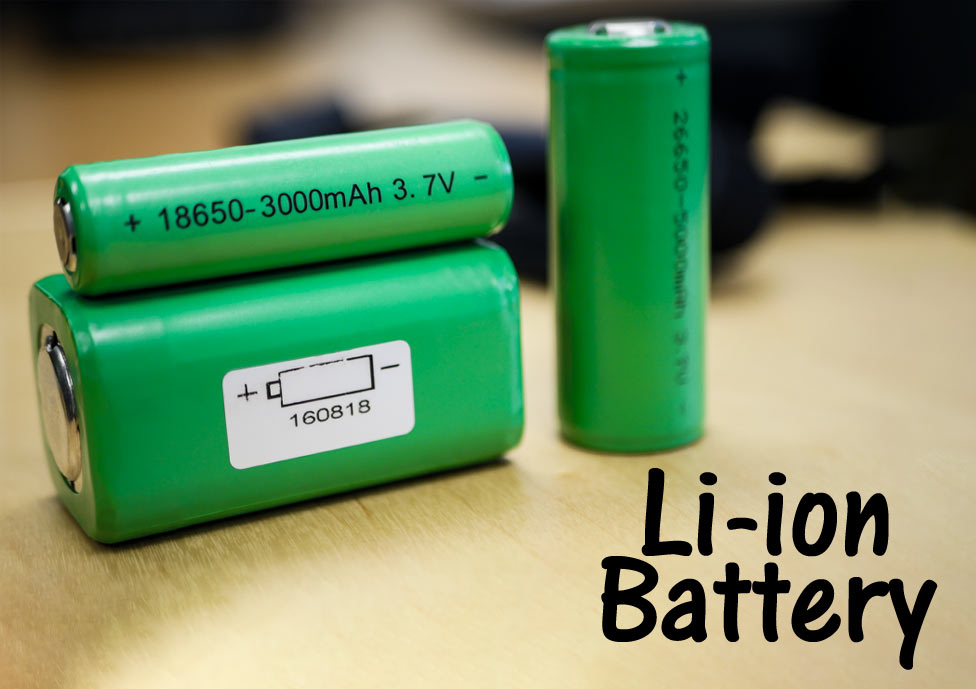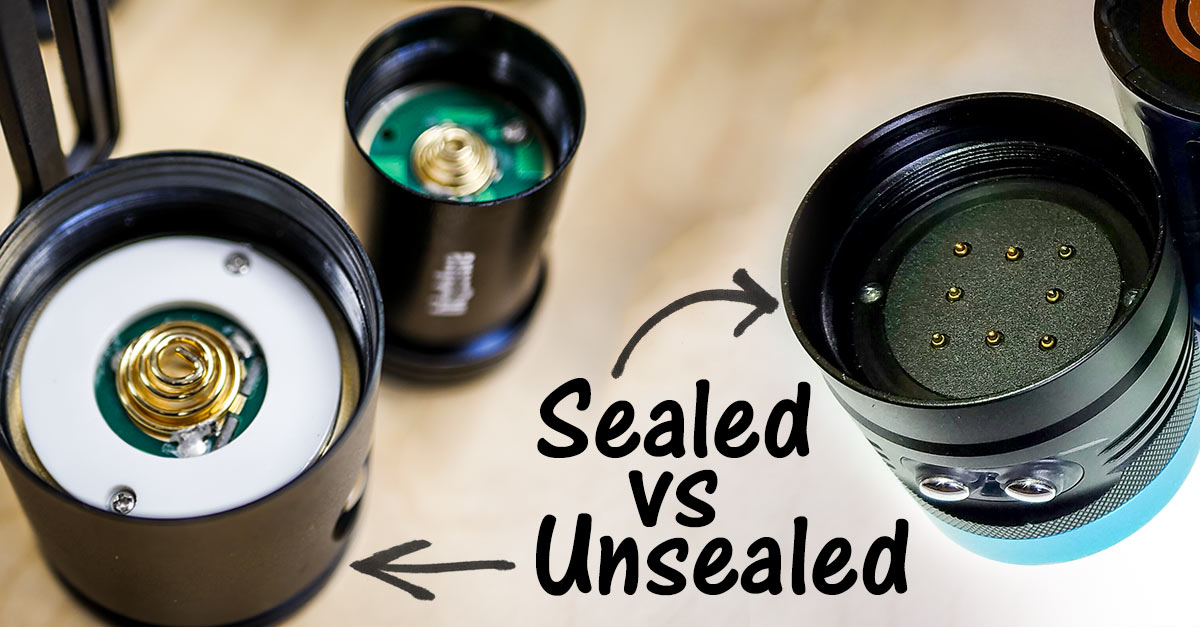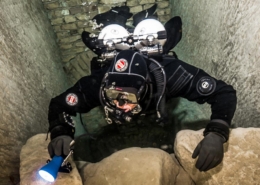[sg_popup id=1]
Battery Technology in Diving
By: John Bentley
Lights, cameras, computers, and ECCRs are all important pieces of dive equipment and are all driven by batteries! The dive industry is often slow to catch on to technological trends but the energy storage market has advanced by leaps and bounds in recent years. So, what makes batteries so different now and for what should we keep an eye open?
To get started let’s define some things in layman’s terms:
Voltage (V) – Difference of potential. The greater the voltage the greater the current and the more movement of charge.
Mili amp hours (mAh)– Amp hours (1 amp hour is 1,000 mAh) are a unit of measurement for storage capacity
Battery/Cell/Module/Circuit – In the electrical engineering world the differentiation is important, but for this, we’ll refer to batteries, whether a standalone cell or a pack, as the colloquial “battery”.
How a battery works
Before looking at the types of batteries it’s important to understand the basic function of a battery. Simply put, a battery is a device that stores energy. Batteries, of all kinds, contain a material that can effectively store electrons across an area. On each side of this storage area there is either a charged materials which will, when connected via a wire, flow electrons towards each other. That is a very simple description of a battery; in reality the interactions aren’t much different than that though.
Where they are used in diving
Underwater lights and cameras were the first foray taking stored electricity devices into the underwater world. The original pioneers of photography and night/cave diving utilized heavy and bulky lights and batteries underwater. Typically lead acid batteries (just like in your car) and halogen lights (often from their cars) were the devices that followed them underwater. It’s always fun to hear stories of headlight bulbs and the 12V car battery being taken into freshwater lakes successfully. The follow-up story in a saltwater environment is typically not quite as successful, as saltwater will arch 12V but their stories are great none the less.
The average diver now has a handful of small batteries that pack tons of power for their lights and cameras. The difference? Technological advanced in battery materials.
Types of batteries
Nickel
Nickel Cadmium (NiCd)
NiCds have been around for a while, and the chemistry makes them relatively efficient, especially compared to alkaline. NiCds have been mostly replaced by the superior NiMh batteries recently and probably won’t be seen in dive applications.
Nickel Metal Hydride (NiMh)
NiMh is very similar to its cadmium counterpart, with one major construction difference. An alloy that absorbs hydrogen is used in place of cadmium. These batteries have very high storage abilities and are used in millions of hybrid cars worldwide. They are significantly less expensive than LiON but don’t quite hit the voltage nor storage capacities in those systems.
Lithium
Lithium Ion (LiON)
Lithium Ion (Lion) are often thought of and referred to as the big dog in the battery wars, for a good reason. Lions produce more voltage and store energy more efficiently than any of the other batteries mentioned in the post. They aren’t new to the market either. While we’re seeing higher mAh ratings for these batteries coming out, Lions have been used in devices for years. Even my 8 year old laptop uses a number of 18650s for its now giant battery pack. With all their benefits Lions are still significantly more expensive than their Nickel counterparts, which is why large batteries, like those found in DPVs, are more often not LiON.
Popular LiON sizes
18650 – Common outside of the dive industry in lights, vape pens and more, so they’re affordable. Look for trusted brand names as overseas knock offs are very common and typically don’t work. Panasonic and Samsung are two typically reliable brands.
26650 – Used in hobby radios. Not as popular in the dive industry because they’re larger
Lithium Polymer (LiPO)
For our purposes as consumers Lithium polymer won’t appear as a competitor. There are currently lithium batteries in production that utilize a polymer, but this is typically used to refer to lithium ion batteries in a flexibly polymer housing, popular in cell phones and RC vehicles.
Charging
Everyone has gotten their new phone and tossed the instructions on charging.
“Never charge until the battery is empty” “Don’t overcharge” “Don’t let the battery drain completely”
Lots of mystery surrounds recharging the rechargeable batteries. A commonplace rule in overhead diving was to never utilize all rechargeable batteries in backup lights as the charge isn’t reliable. With modern charging technology and longevity of batteries that’s not really a concern.
The cycles that a battery can charge and discharge are important though, and with any battery each charge/discharge cycle deteriorates the battery’s ability to function. Overcharging can be particularly dangerous for certain materials as can discharge below certain voltage. Temperature can also have a marked impact on batteries. That’s why you’ll see some 18650s advertised as 19670, or 18650PTC, indicating that there is a small protection circuit and/or pressure relieve holes in the battery designed to not only protect the battery itself, but also the device it powers. Chargers will also have “smart features” that ensure the battery is not overcharged.
Battery Compartments
The compartment in which the battery is stored is an important feature to consider when selecting a device, lights in particular. Some manufactures utilize a sealed battery compartment so that in the event of a flood the electrical components won’t be ruined; only a new battery and some drying is necessary. The only downside is the extra engineering and expense needed to seal a compartment.
Why Does any of this Matter?
Well, it really doesn’t. With most manufacturers switching to rechargeable batteries as a standard for items, like lights, and some having embraced rechargeable technology from the start, like DPVS, you’ll be hard pressed to find single use battery tech in most dive equipment. It is important to understand the differences though, and to choose upcoming tech to ensure that your batteries can be readily replaced if needed. For more information, and to get stocked up on solid batteries, visit an SDI Dive Center near you.











 Natalie L. Gibb
Natalie L. Gibb
Zanechajte komentár
Chcete sa pripojiť k diskusii?Neváhajte prispieť!